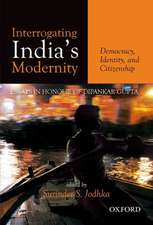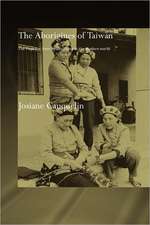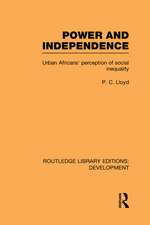Japanese Popular Culture: Critical Concepts in Asian Studies
Editat de Matthew Allen, Rumi Sakamotoen Limba Engleză Hardback – 25 iun 2014
Today, Japanese popular culture’s global influence is felt most keenly in movie culture, animation, television, the Internet, social media, music, fashion, and comics (manga), to name but a few fields and technologies. Indeed, visual culture, specifically television and movies, with a strong emphasis on animation (anime) and manga, led the first wave of Japanese pop-culture exports in the second half of the twentieth century. Since then, academic interest in these exports, both at home in Japan, and overseas, has developed rapidly. The second wave of Japanese popular culture followed the digitization of much of the global media: rapid communications, global connectedness, and the development of new media have provided platforms on which Japanese pop culture has been presented and critiqued, engaged, and transformed. More complex, more hybrid, and more sophisticated, the relationships between Japan and the rest of the world are often given voice through new readings and interpretations of the interconnected popular cultural world.
The assembled articles in Volume I of this new Routledge collection of major works provide a comprehensive overview of the postwar history of Japanese popular culture. Topics include the emergence of popular culture as an academic field in Japan; the genesis of manga and anime; analyses of various cultural artefacts and phenomena, such as censorship and popular culture during the postwar occupation; the 1970s origin of kawaii culture; and street fashion in the 1980s.
Volumes II and III, meanwhile, focus on the twenty-first century. Over the last decade especially, the transnational presence of Japanese popular culture has accelerated, and with it scholarship on Japanese popular culture has grown in depth and diversity. The themes explored in these volumes include the role of digital technology in popular culture; esoteric cultural artefacts and activities, such as loli fashion, maid cafés, otaku culture, and traditional music reinvented as pop, as well as more conventionally popular products such as anime, TV drama, and shojo manga. Collectively, the volume demonstrates the complex and heterogeneous nature of the Japanese pop-culture landscape in the twenty-first century.
The final volume in the collection addresses broader issues associated with Japanese popular culture and globalization. As Japan sought to boost its international ‘soft power’ via a ‘Cool Japan’ strategy, the academy began to pay serious attention to the political-economic implications of Japan’s pop-culture exports. The soft-power rhetoric has become a significant marker of popular culture in Asia in particular, and Japan’s influence regionally has been explored from a number of angles. Along with seminal pieces from Nye, Huat, and Iwabuchi, authors in the first section of Volume IV examine the rise of Japan’s pop-culture industry, and investigate the socio-economic and political-economic implications of topics such as ‘the Japan Brand’, ‘Cool Japan’, and ‘Cute Japan’. In the second section, case studies of soft power are brought to the fore, and analyses of the implications for people and culture are developed. Collectively, the materials gathered in this volume demonstrate the highly mobile and complex nature of the globalization of Japanese popular culture.
Din seria Critical Concepts in Asian Studies
- 25%
 Preț: 3682.83 lei
Preț: 3682.83 lei - 34%
 Preț: 4384.08 lei
Preț: 4384.08 lei - 33%
 Preț: 1872.59 lei
Preț: 1872.59 lei - 32%
 Preț: 1150.00 lei
Preț: 1150.00 lei - 34%
 Preț: 5484.14 lei
Preț: 5484.14 lei - 34%
 Preț: 6744.47 lei
Preț: 6744.47 lei - 34%
 Preț: 6738.42 lei
Preț: 6738.42 lei - 34%
 Preț: 6136.37 lei
Preț: 6136.37 lei - 34%
 Preț: 6188.95 lei
Preț: 6188.95 lei - 34%
 Preț: 6739.12 lei
Preț: 6739.12 lei - 34%
 Preț: 5625.75 lei
Preț: 5625.75 lei - 34%
 Preț: 7296.30 lei
Preț: 7296.30 lei - 34%
 Preț: 6466.08 lei
Preț: 6466.08 lei - 34%
 Preț: 6737.75 lei
Preț: 6737.75 lei - 34%
 Preț: 6744.36 lei
Preț: 6744.36 lei - 34%
 Preț: 6689.79 lei
Preț: 6689.79 lei - 34%
 Preț: 6136.37 lei
Preț: 6136.37 lei - 34%
 Preț: 6179.64 lei
Preț: 6179.64 lei - 14%
 Preț: 1515.73 lei
Preț: 1515.73 lei
Preț: 6742.67 lei
Preț vechi: 10212.90 lei
-34% Nou
Puncte Express: 10114
Preț estimativ în valută:
1291.27€ • 1317.68$ • 1086.40£
1291.27€ • 1317.68$ • 1086.40£
Carte tipărită la comandă
Livrare economică 26 februarie-12 martie
Preluare comenzi: 021 569.72.76
Specificații
ISBN-13: 9780415827898
ISBN-10: 0415827892
Pagini: 1632
Dimensiuni: 156 x 234 x 109 mm
Greutate: 3.21 kg
Ediția:New.
Editura: Taylor & Francis
Colecția Routledge
Seria Critical Concepts in Asian Studies
Locul publicării:Oxford, United Kingdom
ISBN-10: 0415827892
Pagini: 1632
Dimensiuni: 156 x 234 x 109 mm
Greutate: 3.21 kg
Ediția:New.
Editura: Taylor & Francis
Colecția Routledge
Seria Critical Concepts in Asian Studies
Locul publicării:Oxford, United Kingdom
Cuprins
VOLUME I: JAPANESE POPULAR CULTURE IN THE TWENTIETH CENTURY
THE STUDY OF POPULAR CULTURE IN JAPAN
PART 1: THE POSTWAR: 1945–79
PART 2: AFFLUENT SOCIETY 1980–99
VOLUME II: JAPANESE POPULAR CULTURE IN THE TWENTY-FIRST CENTURY
PART 1: VISUAL CULTURES
VOLUME III: JAPANESE POPULAR CULTURE IN THE TWENTY-FIRST CENTURY
PART 2: SUBCULTURES
VOLUME IV: GLOBALIZING JAPANESE POPULAR CULTURE: THE COOLNESS OF JAPAN?
‘COOL JAPAN’ OR ‘SOFT JAPAN’?
JAPANESE POPULAR CULTURE AND BORDER CROSSINGS
THE STUDY OF POPULAR CULTURE IN JAPAN
PART 1: THE POSTWAR: 1945–79
PART 2: AFFLUENT SOCIETY 1980–99
VOLUME II: JAPANESE POPULAR CULTURE IN THE TWENTY-FIRST CENTURY
PART 1: VISUAL CULTURES
VOLUME III: JAPANESE POPULAR CULTURE IN THE TWENTY-FIRST CENTURY
PART 2: SUBCULTURES
VOLUME IV: GLOBALIZING JAPANESE POPULAR CULTURE: THE COOLNESS OF JAPAN?
‘COOL JAPAN’ OR ‘SOFT JAPAN’?
JAPANESE POPULAR CULTURE AND BORDER CROSSINGS
Notă biografică
Edited and with a new introduction by Matthew Allen, James Cook University, Australia and Rumi Sakamoto, University of Auckland, Australia
Descriere
Japanese Popular Culture is a new four-volume collection of major works from Routledge.
























